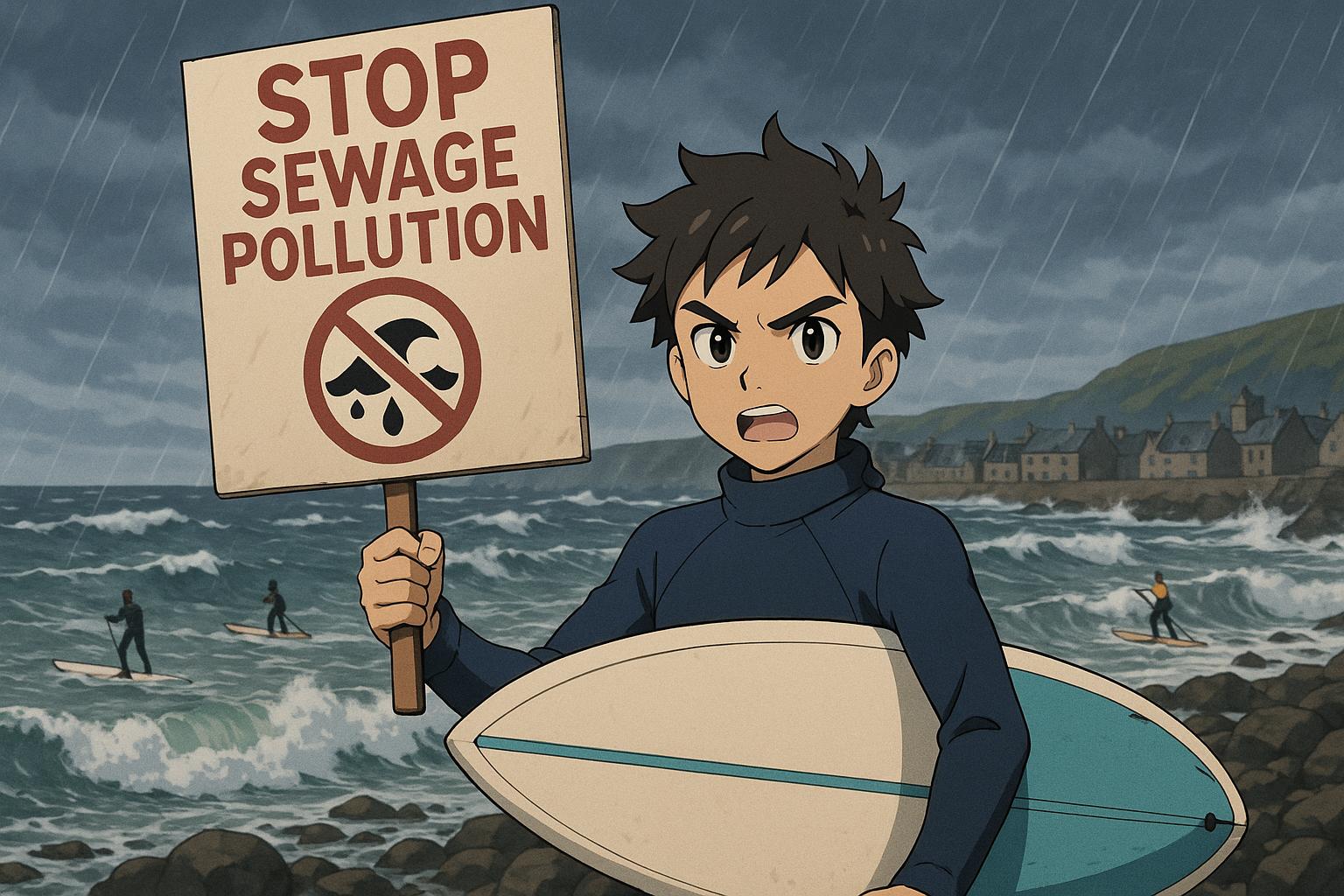Surfers and paddleboarders gathered in Stonehaven, Scotland, as part of a nationwide protest to address the pressing issue of sewage pollution affecting the UK’s seas. Organised by Surfers Against Sewage (SAS), the event is part of a broader movement to raise awareness and demand accountability for rising sewage discharges from water companies. While originally intended as a paddle out, organisers decided against entering the water after a risk assessment, opting instead to demonstrate on the shore.
According to SAS, Scotland has seen alarming figures in recent years, with 23,498 monitored sewage spills reported in its waters alone in 2024. These discharges occurred over a staggering 208,377 hours, raising concerns for the health of marine ecosystems and the safety of those who enjoy these waters. This protest in Stonehaven coincided with similar demonstrations at Nairn Central and Dunbar beaches, alongside numerous locations across England, illustrating the widespread frustration among water users.
The urgency of the protest is underscored by recent data indicating that sewage pollution is not merely a localised issue. SAS's annual report indicates that in 2022, there were 301,091 sewage spills in England, 14,008 in Scotland, and 74,066 in Wales, amounting to an astonishing total of over 2.4 million hours of contamination across the UK. Despite a slight decline from previous years, the situation remains critical, prompting SAS to call for drastic changes in how sewage is monitored and managed—advocating increased investment in infrastructure to safeguard waterways against further pollution.
Charlie Allanson-Oddy from SAS articulated the organisation’s stance, emphasising the need for improved monitoring standards and greater transparency from water companies. In an interview with STV News, he remarked on the staggering scale of sewage incidents and the resultant impact on public health and environmental integrity, echoing calls for systemic reform in the water industry.
The protests serve not only to highlight the issue but also to press for legislative changes aimed at significantly reducing sewage discharges by 2030, especially in high-priority bathing waters and nature sites. Activists stress that immediate action is necessary to protect both aquatic life and the communities reliant on these waters for recreation and livelihoods.
As awareness grows and voices unite against this environmental crisis, the hope is that both the government and water companies will finally respond to what many are now deeming a public health emergency, ensuring cleaner, safer waters for future generations.
Reference Map
- Paragraphs 1, 2
- Paragraph 3
- Paragraph 4
- Paragraph 5
- Paragraph 6
Source: Noah Wire Services
